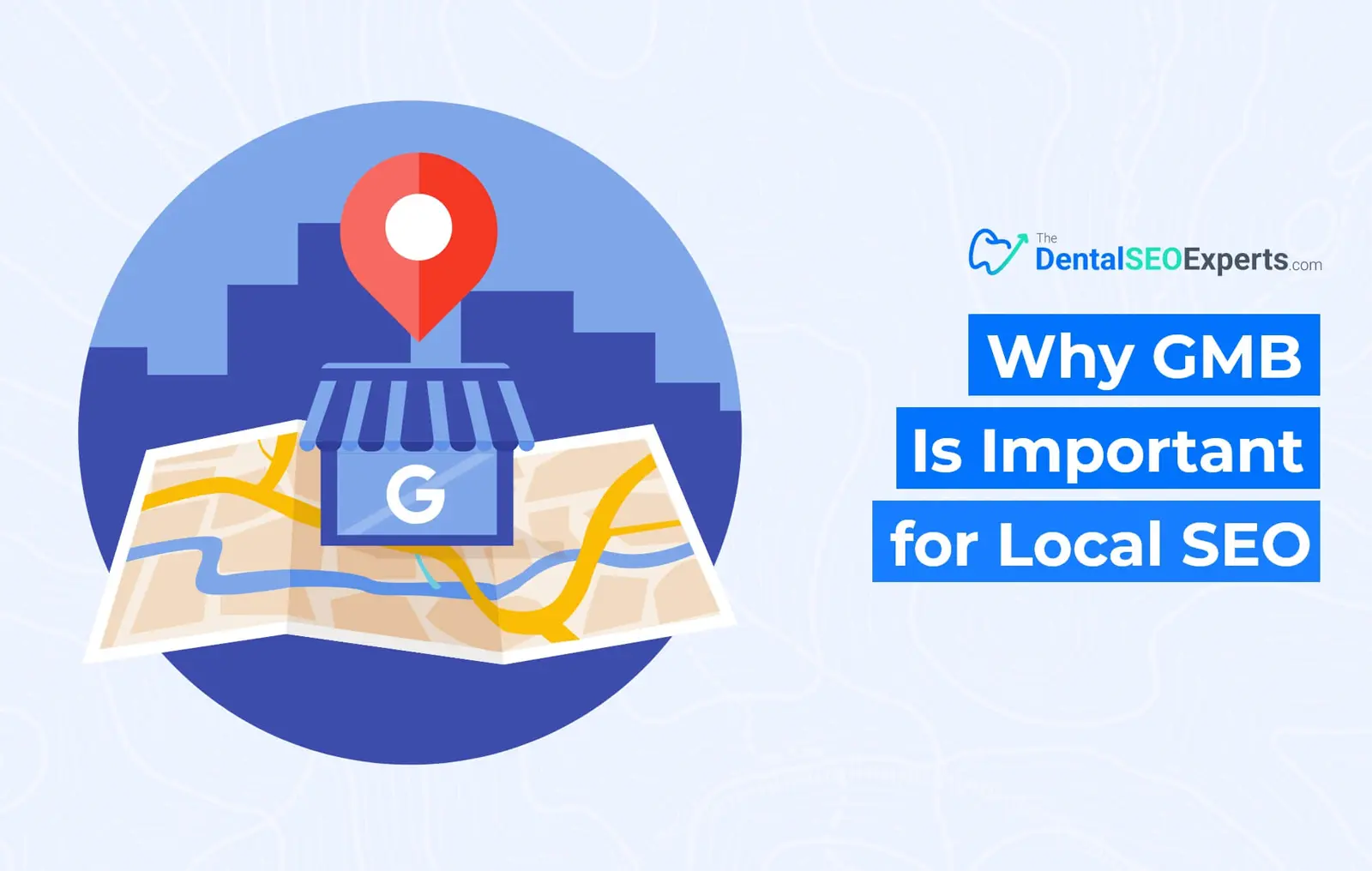
Search Engine Optimization (SEO) is an integral part of any digital marketing strategy. In fact, 61% of marketers consider SEO a top priority. If you’ve ever conducted SEO marketing, you’ll understand why. When done correctly, Search Engine Optimization is an incredibly effective marketing method, extending to all types of websites and businesses, including dental practices.
There are many facets of SEO, among which is Local SEO–an organic marketing strategy aimed at driving web traffic from users nearby your clinic. This article aims to grant you an understanding of Local SEO and seven essential tips to grow your dental practice’s online presence. Keep reading to learn more.
Difference Between SEO and Local SEO?

Traditional SEO is aimed at increasing your website’s online presence in a broad sense, i.e., to anyone likely to be interested in your business. This could mean anyone across the country and even internationally. When it comes to dentistry, though business awareness is useful, growing an international audience is not likely to translate to sales. If a dental patient isn’t in your local area or country, they’re unlikely to travel unless you offer a unique service not available elsewhere.
Targeting nearby users who are more likely to have a genuine interest in your clinic is the job of Local SEO. Local SEO is a set of considerations that tell search engines your business’s location, and that of your desired web traffic, i.e., customers. It helps your dental practice to appear in local search results and to rank higher on search engine results pages (SERPs). An effective Local SEO strategy is crucial in generating authentic patient leads and increasing your clinic’s customer base.
7 Effective Local SEO Tips for Dental Digital Marketing

-
Conduct Keyword Research
Keyword research is the process of identifying which keywords and phrases should be included on your website in order to attract relevant visitors. Conducting keyword research may seem challenging if you’re not versed in SEO. However, several tools are available to help, including Ahrefs, SEMrush, and Moz. Still, finding relevant keywords isn’t the only challenge. You should also consider the keywords’ Search Volume (SV) and Keyword Difficulty (KD). This will give you an idea of whether particular keywords are worth using and how difficult they are to implement effectively.
When we think of keywords, we tend to imagine single words. However, there are three types of keywords: short-tail, medium-tail, and long-tail. As you can likely guess, each term’s prefix denotes the length of the keyword phrase. That is one to two words, two to three, and three plus, respectively. Though they each play a part in all types of SEO, long-tail keywords benefit Local SEO, including questions and comprehensive inquiries. For example, ‘Dental practice near me’, or ‘Dental clinics in Los Angeles.’ This means that using long-tail keywords can more accurately target potential patients in local searches.
-
Setup Your Google My Business Page

Setting up a Google My Business (GMB) page is a crucial step in using Local SEO effectively. GMB allows your dental practice to appear embedded into SERPs when users search terms such as ‘dentist near me.’ A quality GMB page will have several business photos, contact information available, a website link, a list of services, and customer reviews. Having this information clearly listed helps your practice two-fold.
Firstly, a detailed GMB page helps conveniently direct potential patients to places of inquiry, such as your website or general contact information. It also enables them to peek inside your practice and understand what services you offer. This helps attract the right customers with realistic expectations of your clinic. Secondly, Google loves information, meaning it’s more likely to look upon your GMB page and website favorably. Your site will be presented to more web users if your profile has complete information. Having a solid GMB page benefits both you and your customers.
-
Create Valuable Content

Valuable content includes articles or website posts that present helpful information to users, whether for entertainment or educational purposes. Content focused only on SEO and not quality tends to perform poorly, receiving little user engagement and attention from search engines. This is because low-quality content typically increases your website’s bounce rate, as it doesn’t inspire users to engage or dwell on your site. As a result, your SEO scores and SERP rankings are negatively impacted, pushing your website down on search results and making it less discoverable to potential patients.
Your website's SEO score is universal and will affect all facets of SEO marketing, including Local SEO. However, at The Dental SEO Experts, we understand that it can be challenging to develop and create engaging articles and web content. That’s why we offer content writing as part of our comprehensive SEO packages if required. Schedule a call with us today to discuss your options.
-
Encourage Patient Reviews

Patient reviews are an excellent way to show the quality of your practice to potential customers while increasing your perceived credibility. They can be posted on GMB, which gives Google more useful information, and on various review sites such as Dentistry.com or even TripAdvisor. Having reviews on public review sites allows you to take advantage of their domain authority. For example, if someone were to search ‘dental practice in Orange County, CA’ and you had plenty of reviews on TripAdvisor, your practice may appear in search. If that’s the case, it’s likely to appear higher, encouraging user clicks, due to TripAdvisor’s high domain authority.
Acquiring more reviews is easier said than done. You’ll need to encourage patients to leave online reviews after visiting your practice. You could do this by distributing business cards with your GMB profile or TripAdvisor web address to prompt patients when they arrive home. Otherwise, you email previous patients and request that they leave a review of their experience. Be careful to only encourage patients who have had a good experience, or else you risk decreasing your practice’s credibility and reputation.
-
Ensure Your NAP Info Is Correct

NAP stands for Name, Address, and Phone (NAP) number. It’s imperative to ensure that your NAP information is accurate on both your website and your GMB profile. This is to make certain that potential patients are correctly directed to your services. For example, if your practice’s name is listed incorrectly in a public dental directory or on GMB, web users may struggle to find your website, since they could search for the wrong name.
Incorrect NAP information can also confuse search engine algorithms, especially if your GMB profile is not correctly set up. While Google crawls the internet looking for details about your dental clinic, it may miss information that doesn’t correspond with its preexisting knowledge of your practice. For instance, if the location on your website does not match that of popular online directories, Google will be unable to accurately list your location on business SERPs.
-
Optimize for Mobile

Almost 60% of web searches come from mobile devices; as such, search engines favor mobile-optimized websites. This means that local businesses with mobile responsive sites are more likely to appear high in search results, driving increased traffic. You can make several essential modifications to ensure your website is mobile-optimized. These include, but are not limited to:
Image Optimization
Mobile users are more likely to leave a website than desktop users when it takes more than one second to load. This means that it’s crucial to have fast mobile site load times. Compressing images using TinyPNG.com is a simple way to immediately increase the speed of your website, reducing bounce rates.
Responsive Elements
The elements that make up your website, such as text boxes, images, and contact forms, should be responsive to mobile devices. This means that when a user views your website on a mobile device, these elements should scale to the correct screen size, preventing elements from being obscured.
Mobile Facing UI/UX
When building your website, you should ensure that you spend some time developing the mobile-facing user interface (UI) to provide an excellent mobile user experience (UX). This could be as simple as positioning elements in such a way that they do not become cramped when viewed on a small screen.
If you lack the technical expertise to build and optimize mobile-orientated websites, you should consider checking out our dental web development services.
-
Add Location Pages

Location pages are web pages dedicated to explaining and listing the dental services you provide for specific areas. Take a look at our Dallas, TX location page as an example. Creating multiple location pages does not apply to most dental clinics, as dentists generally serve one area. However, they are an excellent opportunity for local SEO keyword usage, even if only one location page is created. For example, our Dallas, TX page hits on the keywords ‘Dentistry in Dallas’ and ‘Dallas Dental Marketing.’
Throughout your copy, you should include relevant keywords for the area using keyword research as discussed in point one. A solid location page should consist of an integrated map so locals can easily find your practice, information about the area, and the services you can provide residents. Like all marketing pages, it’s also good practice to include a call to action and a clear avenue of contact.
Don’t Have Time for Local SEO? Hire The Dental SEO Experts?

When executed correctly, the above seven tips make for effective Local SEO marketing. However, creating a robust Local SEO marketing campaign is challenging without the proper knowledge of Search Engine Optimization. Thankfully, The Dental SEO Experts are here to help.
Not only do we have a blog full of useful guides, but we also have a team of dedicated professionals ready to help grow your practice. Schedule a free consultation with us today and find out how we improve your lead flow and increase your profits.





